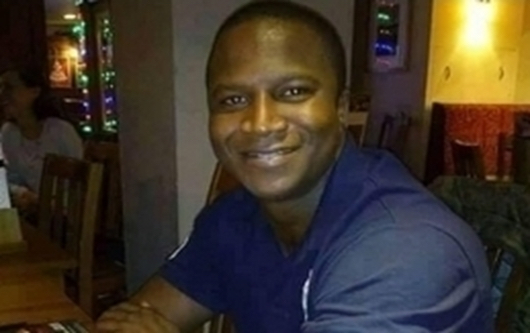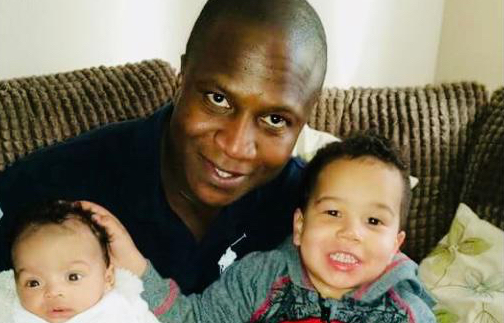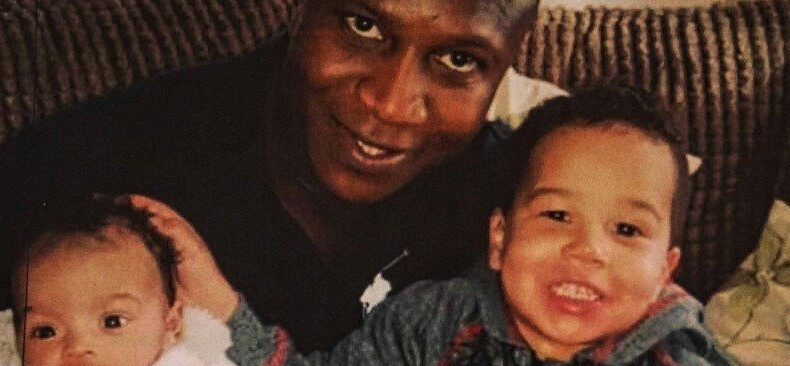As the public inquiry into the death of Sheku Bayoh Inquiry re-starts on Monday, The Ferret looks back on hearing three, which tried to get to the heart of what caused his death.

Physiologically speaking, the human heart is the body’s engine room, pumping blood and oxygen around the body. It contracts with a regular rhythm and a steady beat from the second we are born to the moment we die. That mechanism runs on repeat, contracting, pumping, carrying, returning. Until – sometimes suddenly – it stops.
Sheku Bayoh lost consciousness on the morning of Sunday, 3 May, 2015, after he had been restrained by police for about eight minutes.
He went into cardiac arrest in the ambulance. At Kirkcaldy’s Victoria Hospital, the medical team tried to resuscitate him until he was pronounced dead at 9:04am.
And so it was that at 2pm the next day, forensic pathologists Dr Kerryanne Shearer and Dr Ralph Bouhaidar found themselves standing in front of Bayoh’s body at Edinburgh’s city mortuary.
Their findings were at the heart of the evidence heard during the third hearing of the Sheku Bayoh public inquiry, which looked at the cause of death.
Bayoh’s family are convinced he died as a result of the restraint by police. But police have always denied any wrongdoing and those representing officers said criticism of them is “wholly unwarranted”.
In previous hearings it emerged the family were not informed the postmortem was taking place on that Monday afternoon in Edinburgh and did not see his body in advance. As a result some felt robbed of the chance to say goodbye.
But Dr Shearer told the inquiry, it was normal for a postmortem of a suspicious death to be carried out the following day to ensure evidence that could help determine the cause of death was not lost.
So that day – as with every postmortem – she got to work noting everything in methodical detail: tiny scars, abrasions, cuts and bruising, including those consistent with baton strikes and the use of handcuffs.
A number of petechial haemorrhages – tiny burst blood vessels in the eyes sometimes caused by asphyxia or lack of oxygen supply – were noted.
His first rib, which sits up near the collarbone, was broken. Later the inquiry would hear it was most likely to have been when he fell on his arm to the ground.
Tissue samples, blood and urine were sent to the lab and the initial conclusion of the postmortem was recorded: “unascertained: pending investigation”.
It took several weeks for the tissue sample from the organs to come back from the lab. They included samples from his heart, which Dr Shearer examined down the microscope to check for damage – “scarring or anything like that which can maybe give me an idea of a disease process that may be happening and potentially a cause of death.”
After looking at both the heart in its entirety and at those samples she had one clear finding – everything was completely normal. So what caused it to stop?
The family waited for answers and the weeks ticked on.

It wasn’t until 12 June that the toxicology report came back. It was positive for MDMA – the main ingredient of ecstasy and Alpha PVP, a synthetic stimulant also known as Flakka or Bath Salts.
At the inquiry questions centred around the role those drugs played in his death. Expert psychiatrist Dr Maurice Lipseige confirmed it was “rare” for MDMA or ecstasy to lead to paranoia.
But Alpha PVP, a “very potent form of amphetamine” has the potential to “cause extreme paranoia fairly quickly,” he told the inquiry, with suspicion moving to paranoia and “intense fear that other people want to harm you”.
Previous evidence suggests Bayoh was indeed paranoid. He left his friend Martyn Dick’s in the early hours of the morning in the belief his friends were talking about him, and then accused his friend Zahid Saeed of being an undercover CID officer and attacked him.
In January 2016, following a request from PIRC, Dr Lipsedge offered a psychiatric diagnosis of Bayoh– psychostimulant intoxication leading to psychosis.
Physical symptoms are also caused by a release of adrenaline which can raise the heart rate and blood pressure and put strain on the heart.
This kind of presentation has also been described – particularly in the US – as excited delirium. But the term has been deeply contentious.
Many medical professionals say there is no pathological evidence to support it. Some campaigners argue excited delirium is a highly racialised term, often associated with police restraint of Black people.
Dr Lipsedge was also one of a number of experts who advised joint guidance from the UK Forensic Science Regulator and the Royal College of Pathologists – published in 2020 – stating that “excited delirium” should not be regarded as a cause of death.
Three years previously that was a recommendation made by Dame Elish Angolini in her review of deaths in police custody in the UK.
Lipsedge claimed both excited delirium and the term which has generally replaced it – acute behavioural disorder or ABD – are infused with racial stereotyping and associated with terms like “superhuman strength” and “impervious to pain”
He told the inquiry the two terms “really resonated with the institution of slavery”.
In her statement to the Police Investigations and Review Commissioner (PIRC) on 8 May 2015, Bayoh’s partner Collette Bell claimed he didn’t trust the police and had been stopped as a Black teenager in London.
Dr Lipsedge claimed there was evidence some Black men struggle in restraint because they are afraid of the real and terrifying consequences, even when not in psychosis.
This inquiry has put racism in Scotland in the spotlight. The day after hearing three concluded Police Scotland held a press conference at which chief constable Iain Livingstone branded the force as “institutionally racist and discriminatory”.
While some expressed disappointment and frustration that Livingstone had waited so long, the statement was welcomed by the Bayoh family lawyer, Aamer Anwar.
Susan McVie, an Edinburgh University academic and strategic advisor to Police Scotland told The Ferret the announcement was “hugely significant and symbolic”.
“Facing up to the fact that this is an issue is the first step towards doing something about it,” she said.
Police Scotland’s Assistant Chief Constable David Duncan told The Ferret that it had since “strengthened recruitment and vetting” and was providing new equity and inclusion training programmes and was committed to making changes while being “realistic about the challenges ahead”.
But Scottish Police Federation (SPF) chair David Threadgold said it had deeply “offended and upset” officers while former former federation official Callum Steele described it as “shameful”.

The Federation also had an interest in excited delirium – or acute behavioural disorder (ABD), the term now used.
In a letter to then-justice secretary Humza Yousaf about the terms of reference for the inquiry dated February 2020, SPF lawyer Peter Watson said he had seen no evidence of racism. But he urged the inquiry to investigate the role ABD played in Bayoh’s death.
One pathologist who said he considered the term excited delirium useful was Dr Steven Karch. In a statement to the inquiry he claimed he had examined the hearts of drug users “who die of excited delirium, the possibility of which sounds very likely in this case”.
Dr Karch was also commissioned by PIRC to review the postmortem in November 2015.
He claimed to have found heart abnormalities overlooked during the post-mortem, and a “thickening of the blood vessels” which suggested Bayoh was a “chronic” drug user and suggested the drugs that killed him. Restraint, he said, was not significant.
Karch’s analysis is emphatically disputed by Dr Shearer, who carried out the post-mortem. She claimed her “detailed examinations’ were reviewed not only by Dr Bouhaidar, the second doctor on this case, but also by the other three forensic pathologists from her department, and other witnesses including a professor of cardiac pathology, Professor Mary Sheppard.
“None of us have seen what Dr Karch has seen,” she told the inquiry. “I categorically disagree that there are any chronic changes in the heart.”
Meanwhile leading toxicologist Professor Michael Eddleston told the inquiry that assessing whether drugs could kill someone was complex. Due to lack of research on Alpha PVP the potentially fatal range is vast.
But the context surrounding his death, he claimed, was what mattered. “It’s possible because of the restraint he died at a lower dose than would have been expected if he hadn’t been restrained,” he told the inquiry.

Forensic pathologist Dr Nathaniel Carey, previously commissioned to look at the impact of crush asphyxia during the Hillsborough football stadium disaster, told the inquiry that restraint was the most significant factor in Bayoh’s death.
In May 2015 his expertise on the cause of death was first requested by Bayoh family lawyer, Aamer Anwar. But he denied his opinion was biased.
In June 2015 Dr Shearer found the exact impact of restraint difficult to know for sure. But she could not rule it out. Neither could she rule out the role drugs played.
The revised cause of death was recorded on the final version of the post-mortem. “Sudden death in a man intoxicated by MDMA and Alpha-PVP, whilst being restrained.”
But there’s a postscript. On request, Bayoh’s blood was later tested – and found to be positive for – sickle cell trait.
For most fit and healthy people this will cause no issues and they will not go on to develop sickle cell disease, a serious condition which means the blood is chronically low in oxygen.
But there is evidence it has led to death in the face of extreme exertion, such as that of military recruits training in fierce heat.
Professor Sebastian Lucas – one of the most experienced in the UK in terms of sickle cell cases – initially concluded this was significant.
But he later claimed he was not made aware of the level of force used in the restraint. And he changed his mind.
Sickle cell trait, he said, was only a contributing factor in Bayoh’s death, with restraint potentially the reason for the blood cells to sickle.
The human heart, Professor Lucas added, is the last thing that finally gives up when someone is dying. It can carry on beating “until the bitter end”, he said.
But eventually Bayoh’s heart stopped.
More than eight years later, the search for definitive answers continues. On 28 August the inquiry will reconvene, hoping to get closer to them.
Listen to The Ferret’s podcast, Sheku Bayoh: The Inquiry at theferret.scot or wherever you get your podcasts. Episode six launches on 28 August. Join us at theferret.scot/subscribe and get three months free with the code PODCASTOFFER.














